How to Start Your Mac in Safe Mode [Step-by-Step Guide]
- Safe Mode on Mac is used for diagnosing and fixing issues, providing a minimal environment by loading only essential system components.
- The process varies for Apple Silicon and Intel-based Macs, involving holding down the power or shift key until the "Safe Boot" indication appears.
- Generally, a simple restart of the Mac exits Safe Mode, returning it to normal operations.
Starting your Mac in Safe Mode can be a helpful troubleshooting step. Safe Mode limits the startup process by not loading certain software, which can be useful when your Mac is experiencing problems.
This guide will explain the essentials of Safe Mode: what it is, why it’s needed, and how to use it. We’ll show you how to identify your Mac model, the steps to start it in Safe Mode, and how to tell if you’re in Safe Mode.
You’ll also learn about starting Safe Mode using Terminal, what to do if your Mac won’t boot in Safe Mode, how to fix this issue, and how to exit Safe Mode. This information will assist you in effectively managing your Mac’s performance and troubleshooting issues.
Table of Contents
What is Safe Mode, and why do you need it?
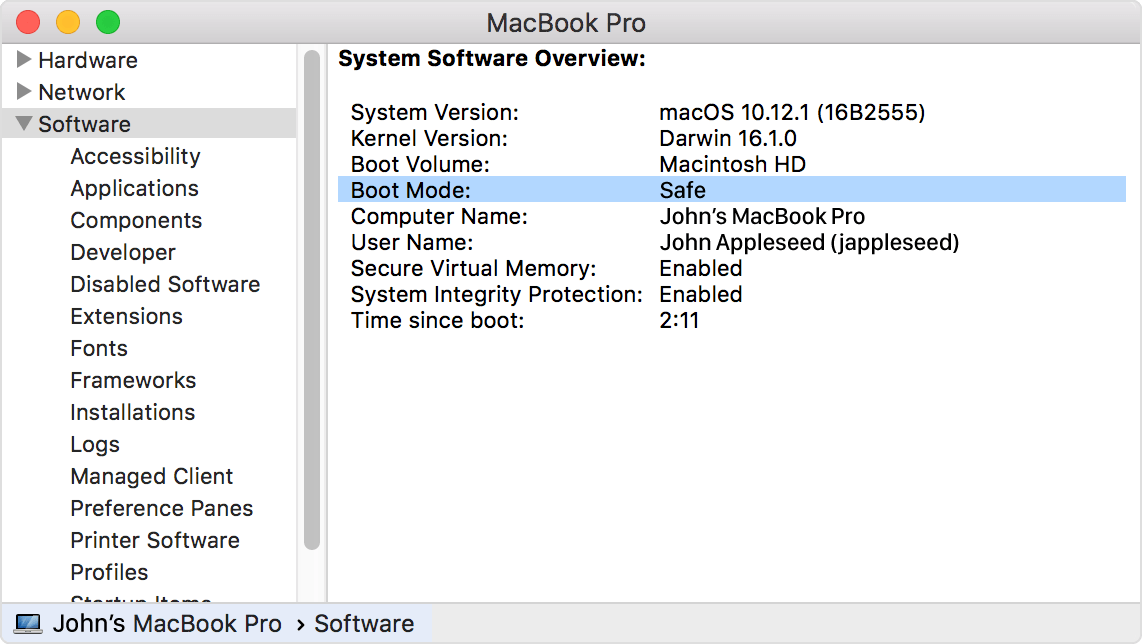
Safe Mode is an unusual way to start your devices that helps fix problems with the operating system. Think of it as a tool for diagnosing and solving issues. Safe Mode can be useful when your Mac isn’t working right. Here are some common problems where Safe Mode can help:
- Your Mac is very slow, and you notice that something called “kernel_task” uses much of the computer’s power.
- Your Mac freezes and doesn’t respond.
- The computer keeps restarting on its own.
- Your Mac won’t start properly and shows a blank screen or a pink, grey, or black screen.
- It gets stuck on the loading bar when you’re trying to start it.
- You can’t get past the login screen.
- There’s a kernel panic when your Mac is in sleep mode, especially if you’re using macOS Ventura.
In these situations, Safe Mode is there to help figure out and fix the problem.
Figure out your Mac type
First, figure out what kind of Mac you have to start fixing your Mac. This is important as the steps for starting your Mac in Safe Mode will vary by the Mac type. Here’s how to do it:
- Click on the “Apple” logo at the top of your Mac screen.
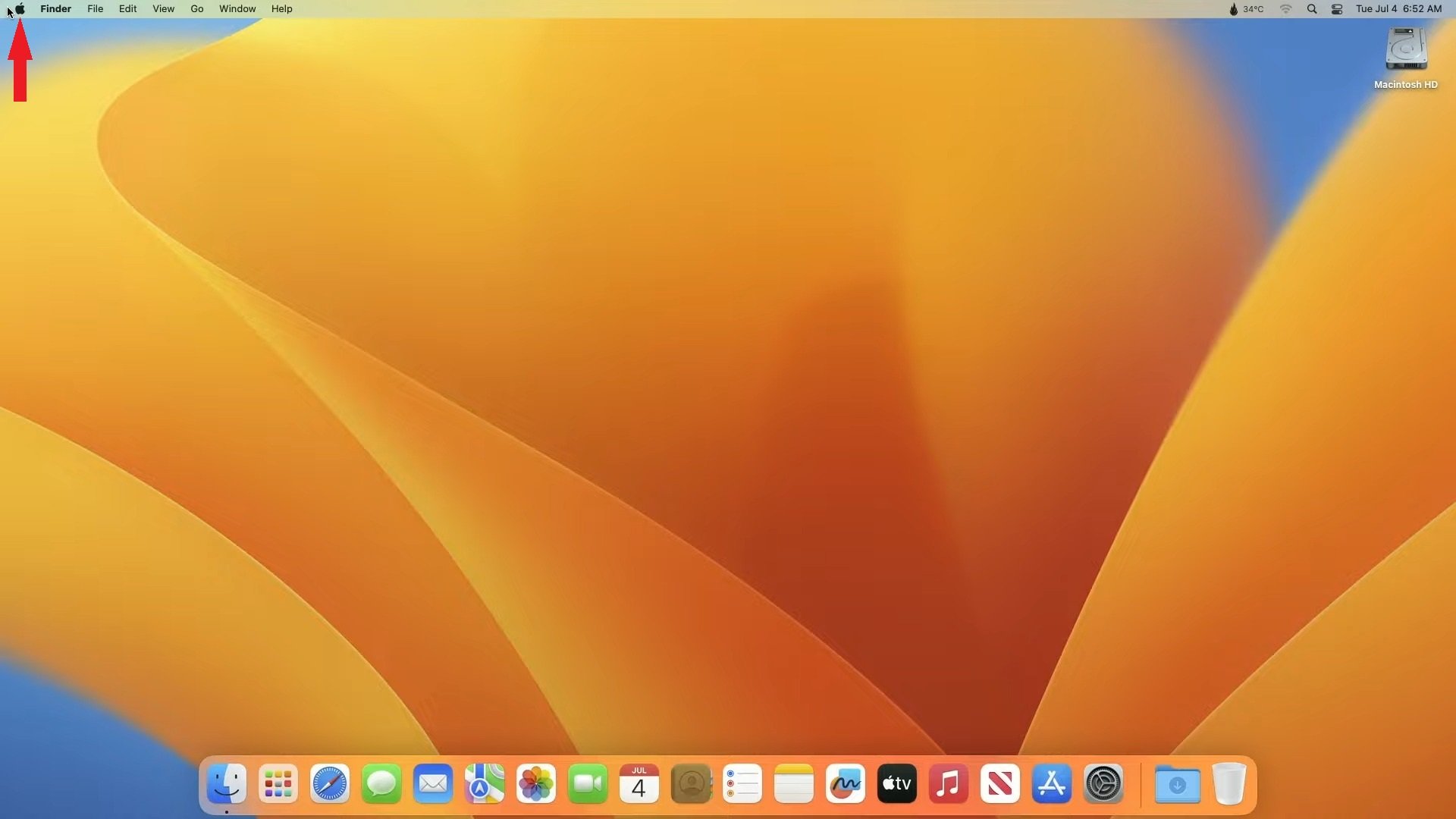
Click on the Apple Logo - Choose “About this Mac.” A window will pop up with the details you need.

Choose About this Mac - Look for a section in the window. If it says “Chip” with a name like Apple M1 or Apple M2 Pro, your Mac has Apple Silicon. You’ll need to follow specific instructions for these types of Macs.

It is an Apple Silicon Mac
If, instead, you see “Processor” with a name like “Intel Core i9,” your Mac has an Intel processor. For this type, you’ll use different steps to fix your Mac. It’s important to know which kind you have because the troubleshooting steps vary depending on the type of Mac.
How to start Mac in Safe Mode
Now that you understand what Safe Mode is on a Mac, let’s look at how to start your Mac in Safe Mode. The steps to do this depend on the type of chip your Mac has –an Intel chip or an M1 chip. Each type has a different method for starting in Safe Mode.
Here’s a simple guide on how to boot a Mac in Safe Mode:
↪ Start your Mac with Apple silicon in Safe Mode
To start a Mac with an Apple silicon chip in Safe Mode, follow these steps:
- Click on the Apple menu at the top of your Mac’s screen and select “Shut Down.”

Click Shut down - A prompt will appear for confirmation. Click “Shut Down” to turn off your Mac. If your Mac is not responding, you can press and hold the power button to turn it off and restart it.
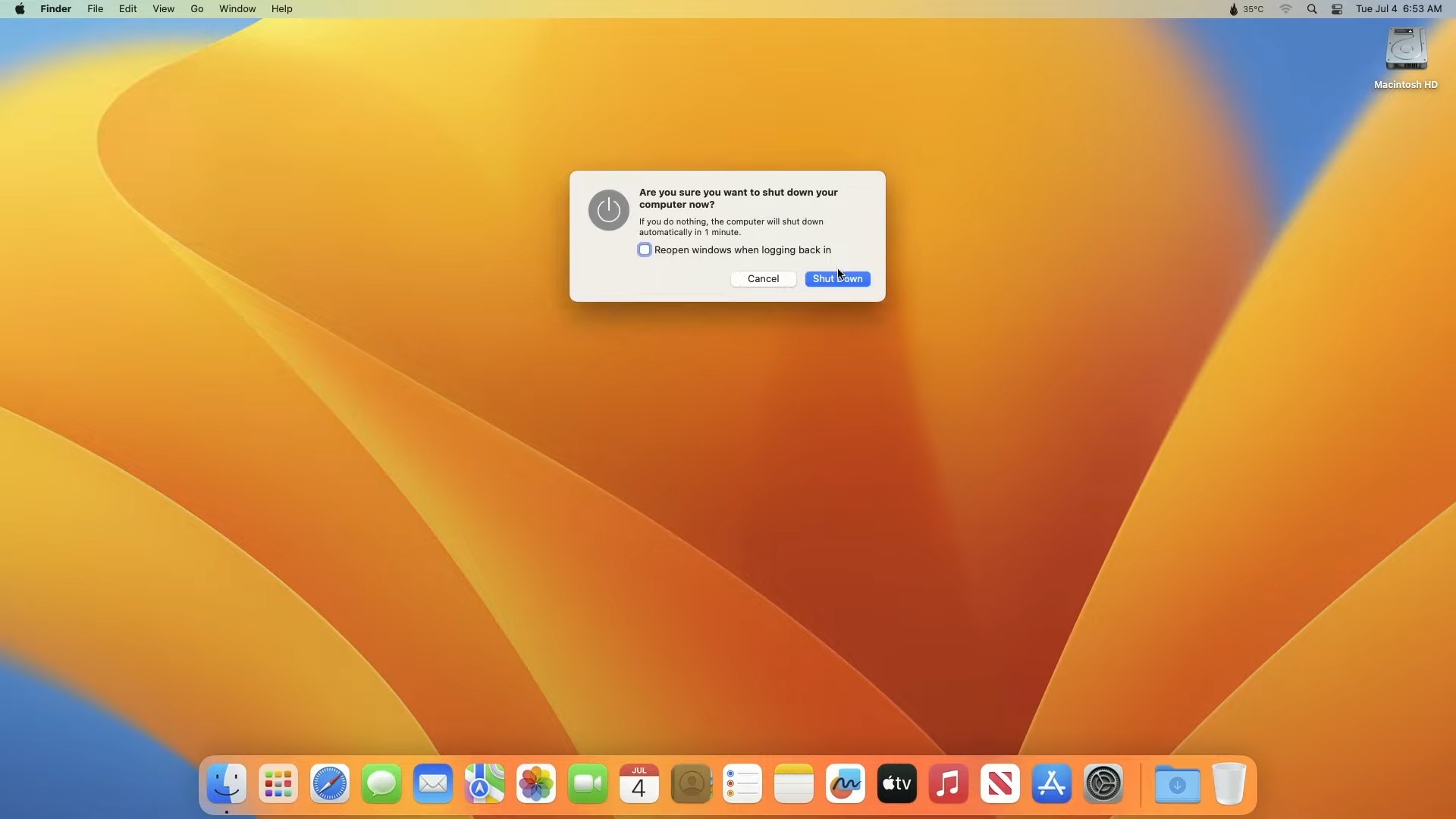
Click Shut Down again - Wait until your Mac completely shuts down. You’ll know it’s off when the screen is black and all lights (including any on the Touch Bar) are off.
- Hold down the power button on your Mac. Keep holding it until you see a message that says startup options.

You’ll see startup options - Pick a boot volume (the part of your Mac where data is stored). Press and hold the Shift key. While holding it, click on “Continue in Safe Mode.”

Press and hold the Shift key
Images Sourced from Macintosh Weekly
Your computer will restart by itself. When you get to the login window, there should be a label that says “Safe Boot” on the top menu bar. This means you’re in Safe Mode.
↪ Start your Intel-based Mac in safe Mode
To start your Intel-based Mac in Safe Mode, follow these instructions:
- Either turn on your Mac or restart it if it’s already on. As soon as you do this, quickly press and hold down the Shift key. Keep holding it until you see a screen where you can log in.

Press and hold down the Shift key - Log in to your Mac using your username and password on this screen. Sometimes, your Mac might ask you to log in a second time.
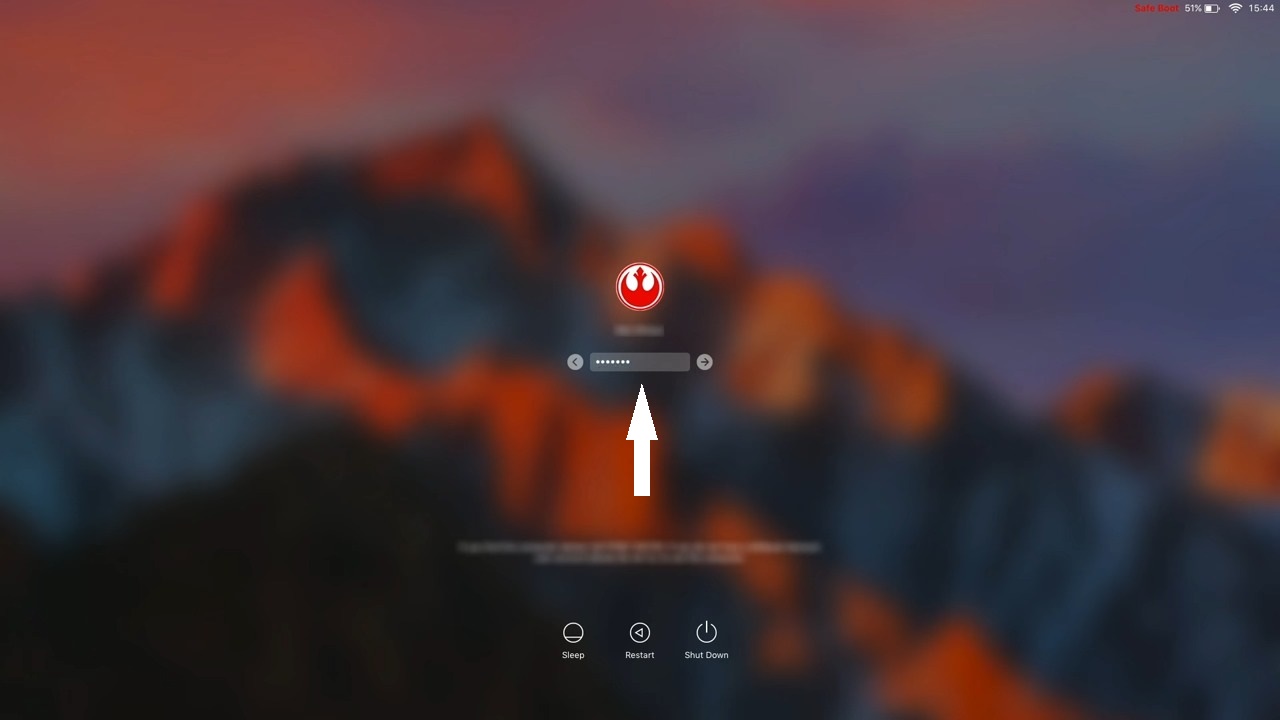
Log in to your Mac - Whether on the first login screen or the second one, you should see the words “Safe Boot” somewhere on the top of the screen.
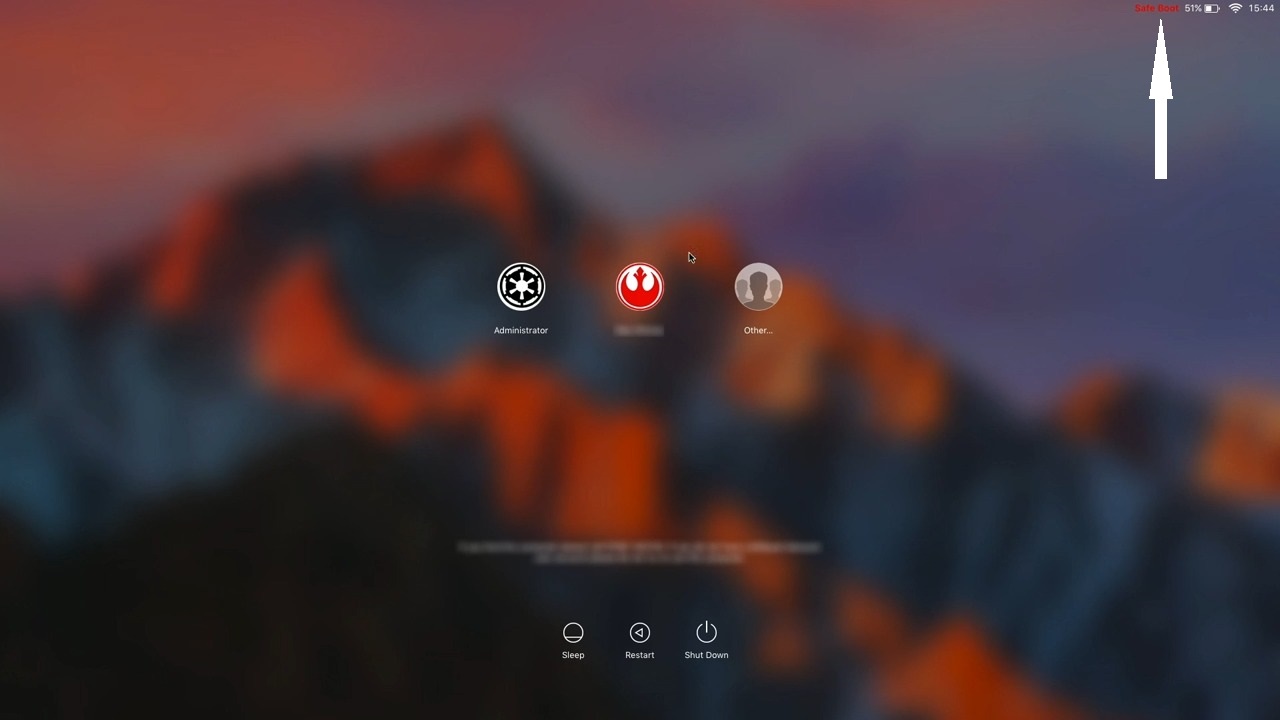
You should see the words Safe Boot
Images sourced from mydoodads
How do you know you are in Safe Mode?
When you’re in Safe Mode on your Mac, you can tell by a few signs. One clear indicator is the words “Safe Boot” in the menu at the top right corner of your screen. This is especially true for the latest versions of macOS.
You might also notice other signs that you’re in Safe Mode. Your system may respond more slowly than usual, and the animations might not be as smooth.
To confirm that you’re in Safe Mode, you can follow these steps:
- Click on the Apple logo in the top left corner of the menu.
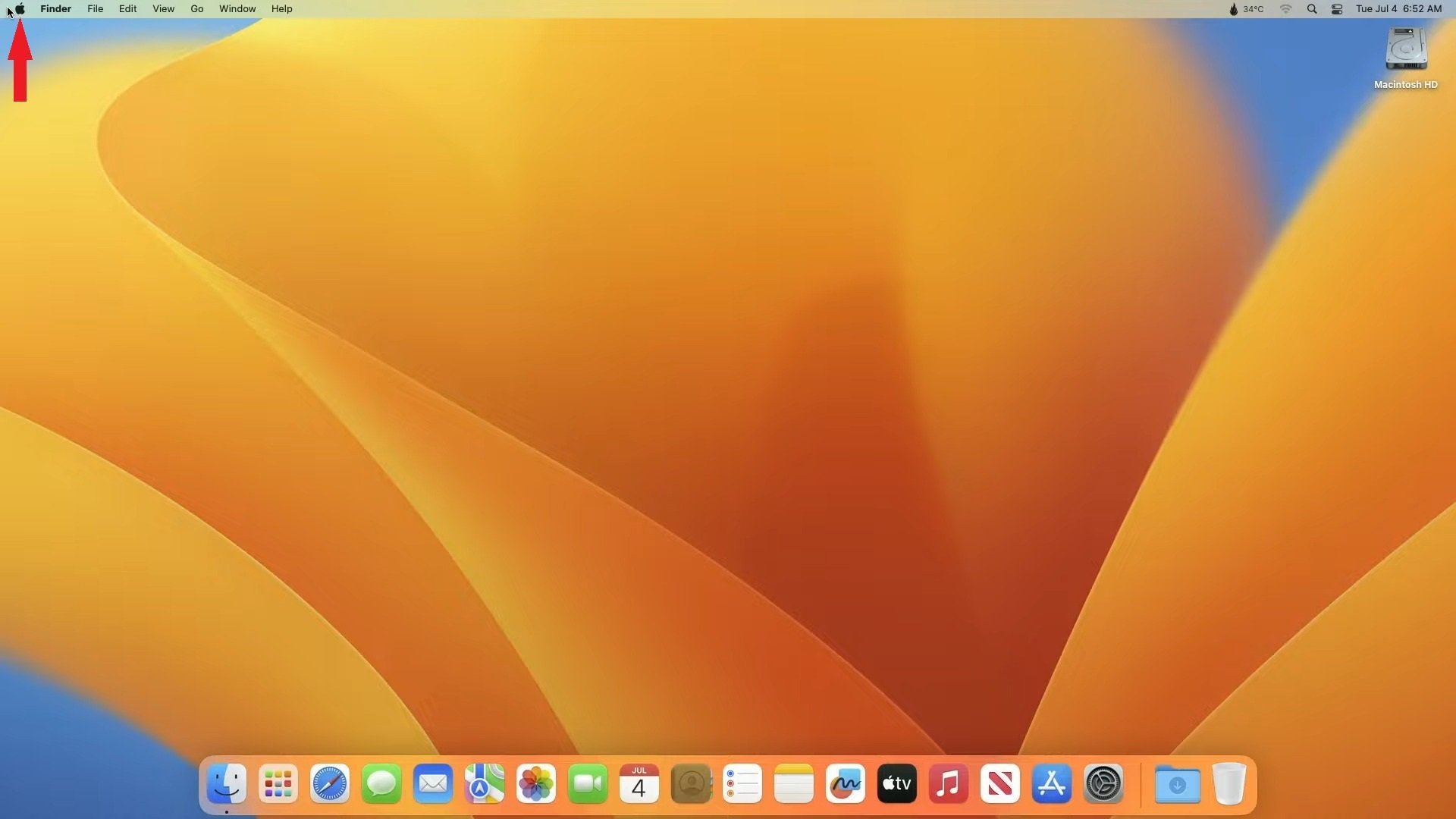
Click on the Apple logo - Select “System information.”
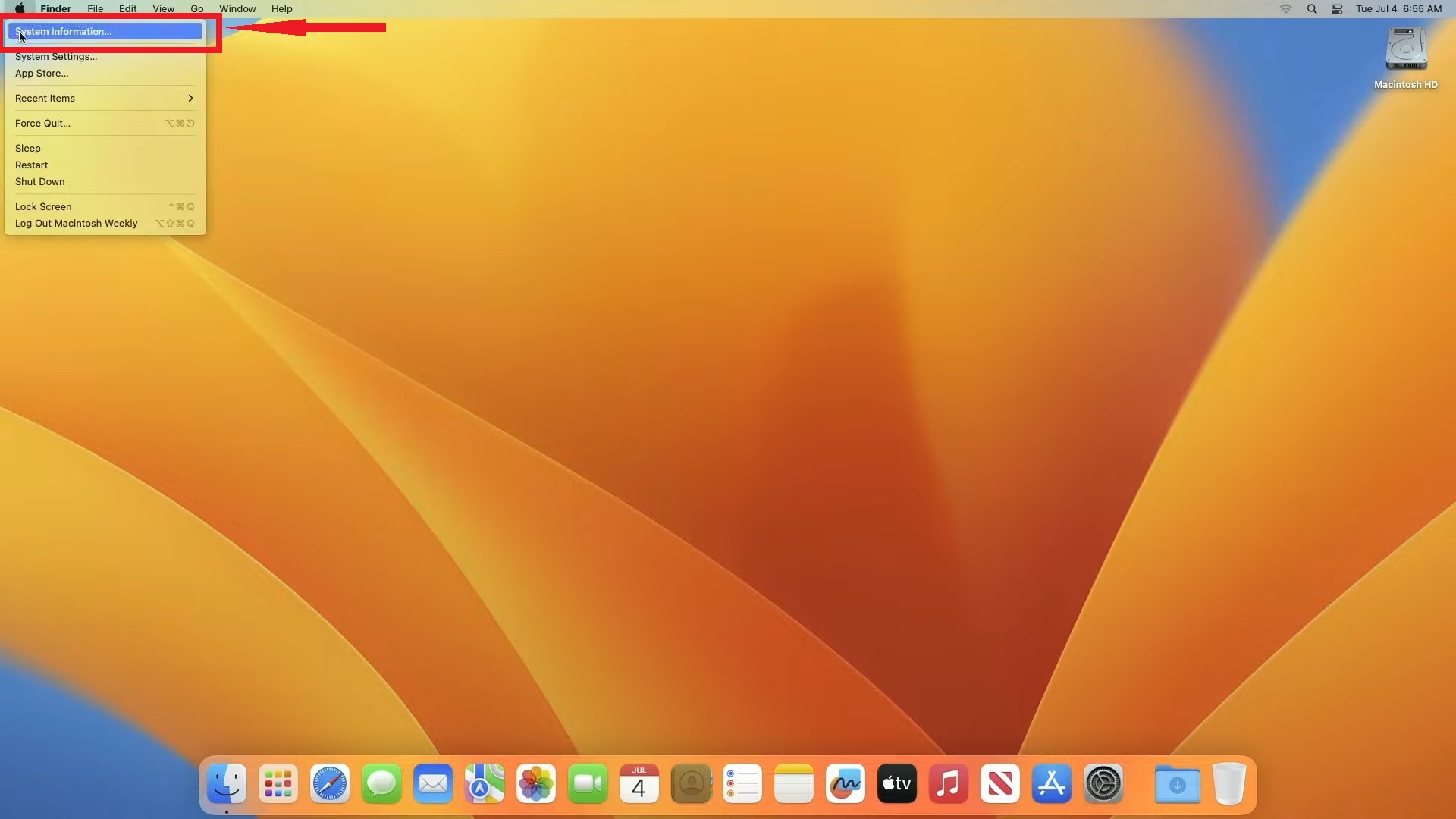
Select System information - In the System Information menu, select “Software” and look for the “Boot Mode” section.
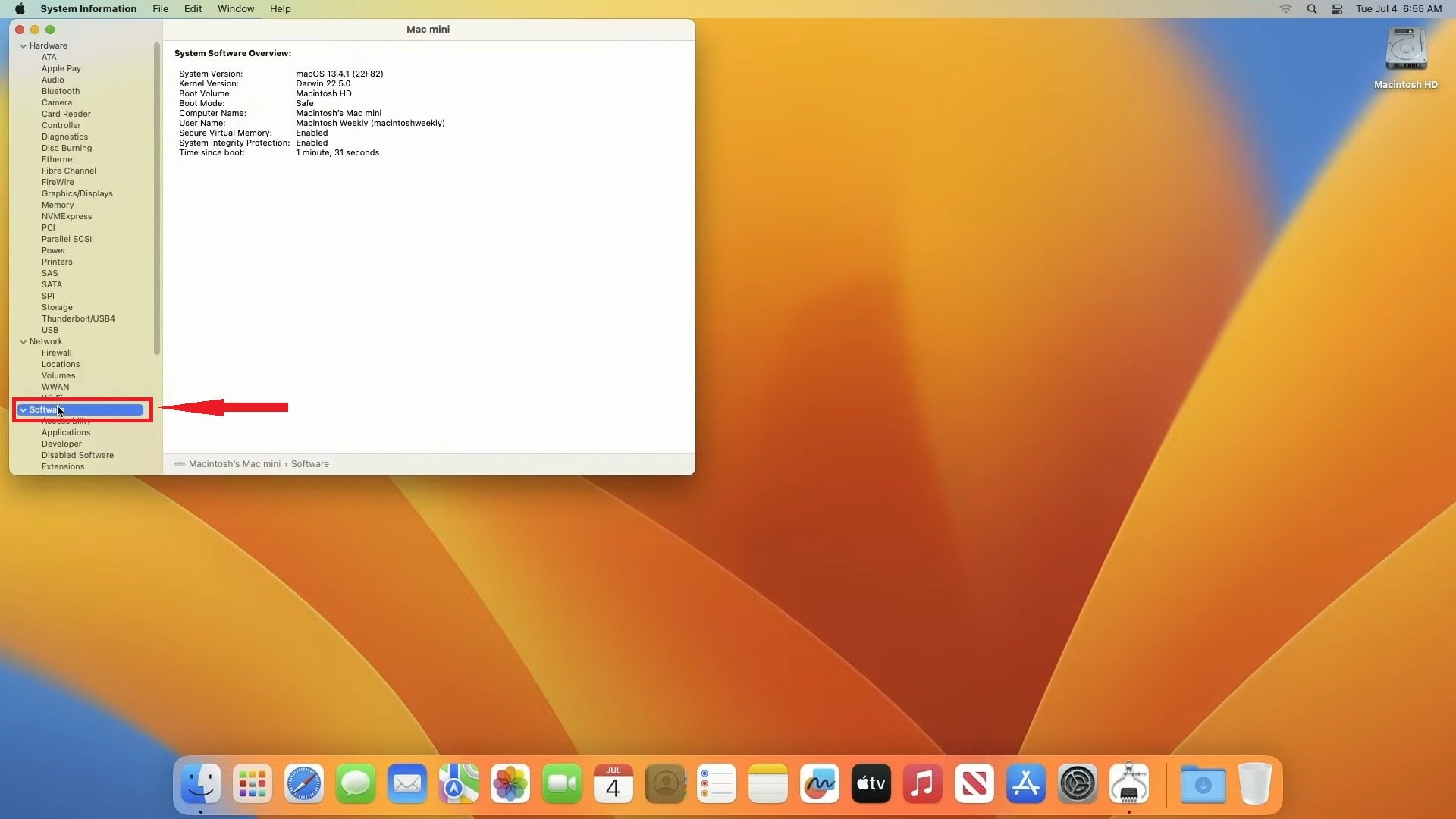
Select Software - If it says “Safe,” you’re in Safe Mode. If it says “Normal,” then your Mac is in its regular operating Mode.

If it says Safe you’re in Safe Mode
READ MORE: How To Play Windows Games on Mac – Detailed Guide ➜
Start Mac in Safe Mode using Terminal
Starting your Mac in Safe Mode using Terminal might sound tricky, especially if you’re not used to working with Terminal. However, it’s useful when you don’t have a keyboard connected to your Mac or want it to always start in Safe Mode until you decide otherwise.
Here’s a simple way to do it:
- First, find the Terminal application. Click on the Finder, go to “Applications,” then open the “Utilities” folder. Inside, you’ll find Terminal.

First, find the Terminal application - Open Terminal, and type in this Command: sudo nvram boot-args=”-x.” After typing it, press the Enter key.
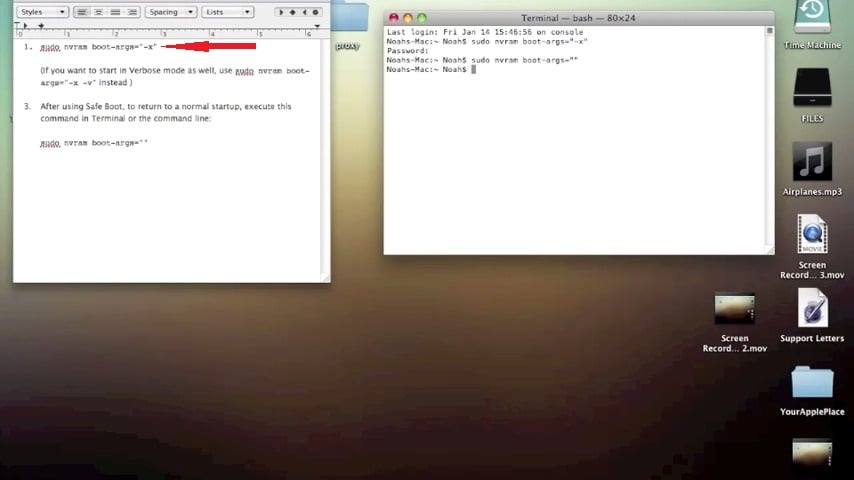
Open Terminal, and type in this command
This Command tells your Mac to start in Safe Mode. Remember, this will keep happening until you change the setting.
- After entering the Command, restart your Mac. You can do this by clicking on the Apple Menu and selecting “Restart.” Your Mac will then automatically start up in Safe Mode.

Restart your Mac - When your Mac restarts, you’ll see the login screen, even if you usually don’t because of automatic login settings. At the right-bottom corner of this screen, you should see the words “Safe Mode.” Choose a user and log in to use your Mac in Safe Mode.
Images sourced from YourApplePlace com
To leave Safe Mode, you’ll need to use Terminal again. Open Terminal and type this Command: sudo nvram boot-args=””. You might need to enter your password again. After this, restart your Mac, and it will boot up normally, exiting Safe Mode.
How do I exit Safe Mode on my Mac?
To exit Safe Mode (also known as Safe Boot) on your Mac, you just need to restart it. Do this the way you usually would, but remember that restarting from Safe Mode might take longer than a normal restart.

If your Mac has already restarted on its own while in Safe Mode, it probably means it fixed a problem with the startup disk. But, if your Mac keeps restarting repeatedly and you can’t get out of this loop, it’s a good idea to contact Apple Support or take your Mac to an authorized repair shop.
Fix Mac won’t boot into Safe Mode
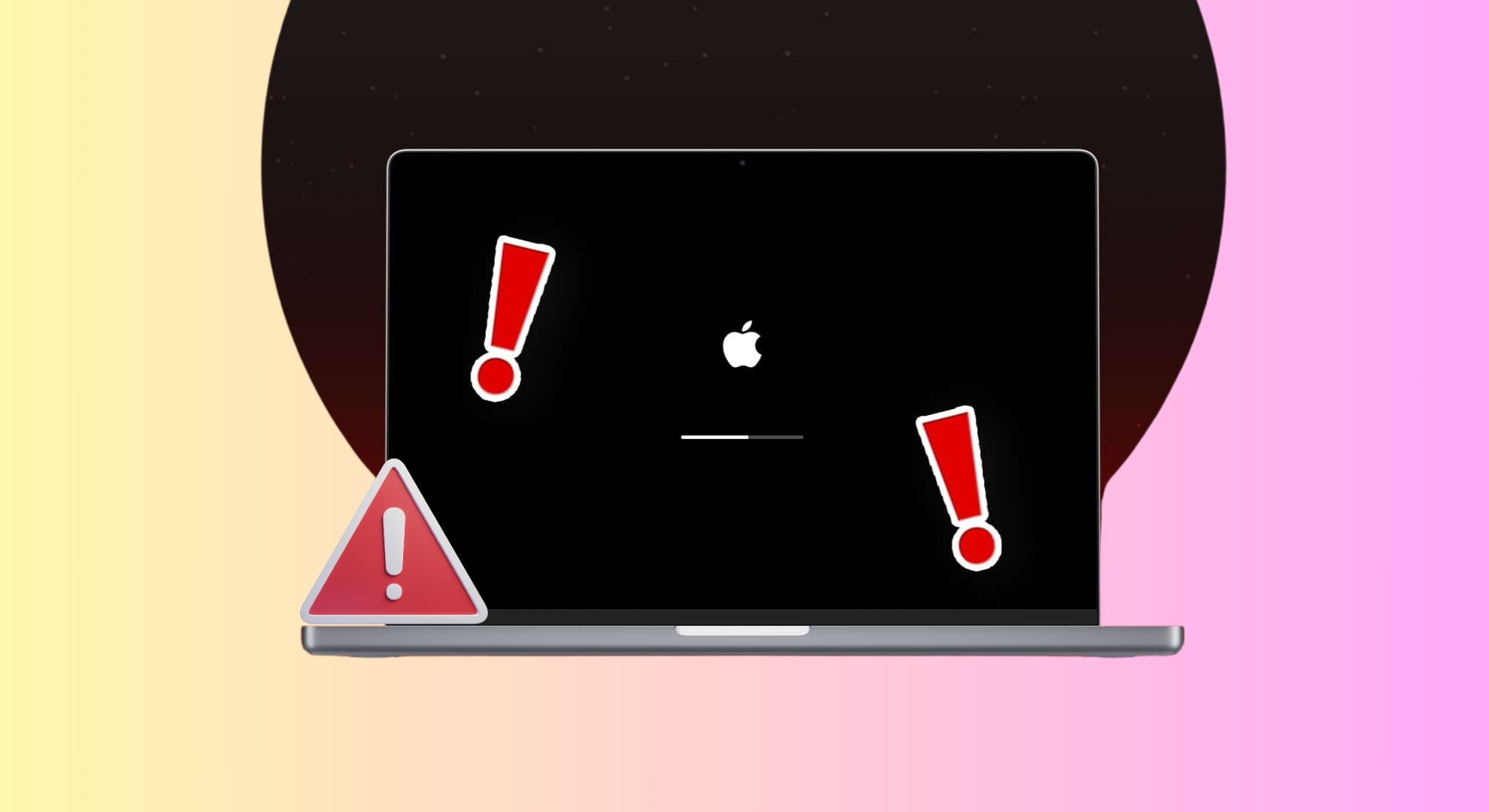
If your Mac won’t start in Safe Mode, here are some steps you can try to fix the problem:
- Option key method: Hold down the Option key and press the Power button on your Mac. This will show you the startup disk. Choose it to try booting into Safe Mode.
- Reset SMC (System Management Controller): First, shut down your Mac. Then press the Option, Control, and Shift keys together for about 10 seconds. This resets the SMC. After that, try starting your Mac in Safe Mode again.
- Turn off the Firmware password: Restart your Mac and immediately press Command + R. This will take you to the Mac Recovery Mode. Enter your firmware password if you have one and choose your language. Then go to Utilities > Startup Security Utility and select “Turn Off Firmware Password.”
- Turn off FileVault: Go to the Apple menu, System Settings, and Privacy & Security. In the right window, scroll down to find FileVault. If it’s on, click the “Turn Off” button to disable it.
These steps can help if your Mac has trouble starting in Safe Mode. Remember, these are more advanced steps, so if you’re not comfortable with them, you might want to get help from someone who is more experienced with Macs.
READ MORE: What is FileVault in macOS & Should You Actually Use It? ➜
Final Thoughts
Starting your Mac in Safe Mode is valuable and can help you troubleshoot various issues your computer might face. Whether you have an Intel-based Mac or one with an Apple silicon chip, the steps to enter Safe Mode are straightforward. Patience is key during this process, as it may take longer than a usual startup.
Safe Mode can resolve issues like slow performance, freezing, and startup problems. If you encounter difficulties entering or exiting Safe Mode, simple solutions like resetting the SMC or adjusting settings can often help. If problems persist, don’t hesitate to contact Apple Support or visit an authorized service center.
FAQs
Check if the Shift key on your keyboard is stuck, as this can cause your Mac to start in Safe Mode. If the key isn’t stuck, try turning off your Mac by holding down the power button for a few seconds, then restart it. If this keeps happening, contacting Apple support for more help is a good option.
No, they are different: Mac Safe Mode helps start your macOS without unnecessary software. It’s useful for fixing problems with your Mac, like login issues. Mac Recovery Mode is for when you need to get back files from a Time Machine Backup, check and fix disk errors, or reinstall macOS from scratch.
It’s not recommended always to use Safe Mode. Safe Mode only loads essential parts of the operating system. Using your Mac like this always might cause errors and problems because it doesn’t use all the normal drivers and software.
Yes, Safe Mode can help uninstall apps that usually start automatically when your Mac boots up. Since Safe Mode stops these apps from starting, you can remove them more easily.
 Reviewed by
Reviewed by 




